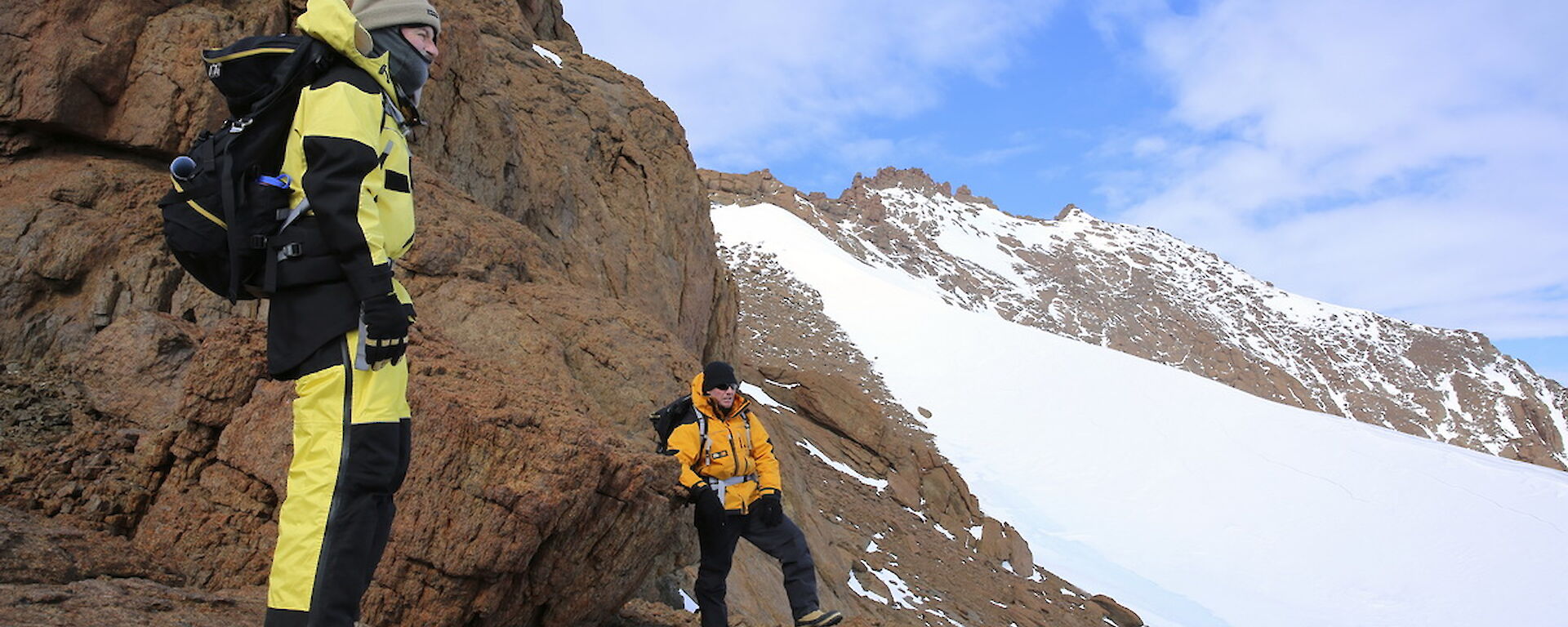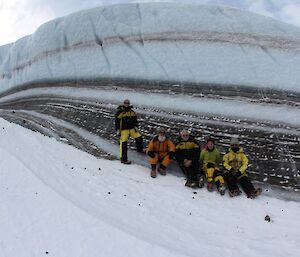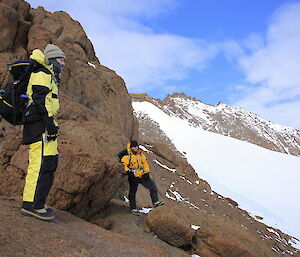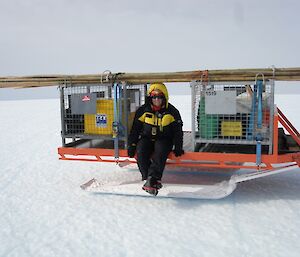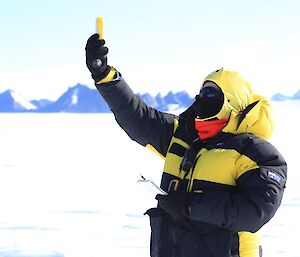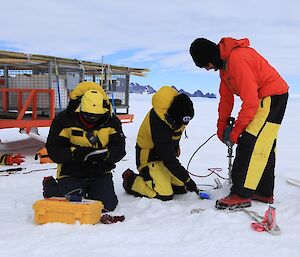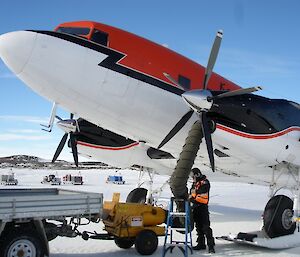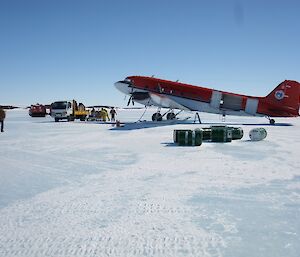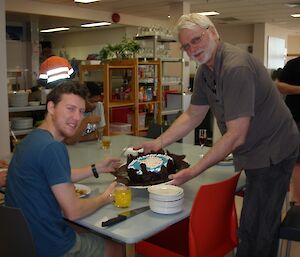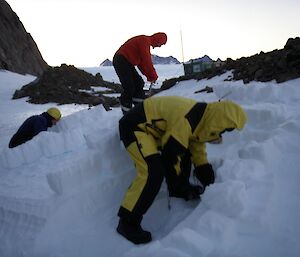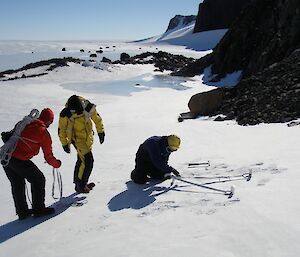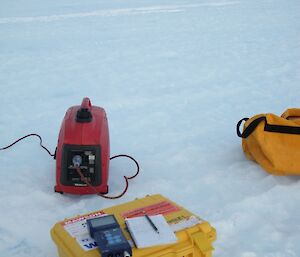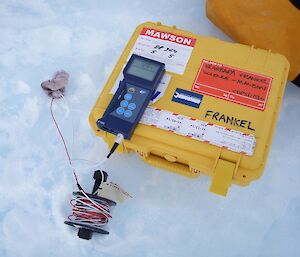This week at Mawson saw the start of some glaciological field work up on the ice behind the station in support of an Antarctic Modernisation Program. The project is to investigate potential ski landing areas on snow for large ski-equipped aircraft. The field team of three, myself — Dr. Barbara Frankel (Project Manager, Geologist/Glaciologist, crocheter extraordinaire), Dr. Stefan Vogel (Ice Sheet Glaciologist, Mountaineer, and diligent yoga-ist), and LCPL Stewart Cox (Army Surveyor, birthday boy, and darts enthusiast) got out into the great white yonder and started to drill some holes to take temperature measurements. Why? So that we can get a handle on the regional glaciological setting so that we can predict if the anything will change much in the next 20–30 years. To do this some of the things we need to measure are ice temperature, weather, and ice sheet velocity.
Getting outside to do this work is not quite as straightforward as you might think. First of all you need to be fit and healthy and pass a stringent Antarctic medical, then you need to be passed as mad enough to work here with a psychological assessment. Then there’s all the pre-departure training and forms to fill in, and the cold weather clothing to pick up. A lot of planning goes into every field project too — deciding how to do the work, what you need to do it with, and then packing it for the long and bumpy rides. Only then can you get on the ‘bus’ rides to get here. In our case it was two; a 3-week ground-hog day experience aboard the icebreaker RSV Aurora Australis (with a lot of sea ice involved), then a 2.5 hour ride in a rather elegant Basler fixed-wing aircraft (DC-3) from the sea ice at Davis Station, over to the sea ice at Mawson Station. Then we had to be field trained! This involved going out over night with the Field Training Officer, John, to learn how to survive when caught short by the ‘A Factor’; we spent a night in a ‘snow coffin’ next to the Rum Doodle Hut in the Northern Masson Range. It was the most spectacular spot!
As you can see from the photos, Stefan and Stewart have got the drilling down to a fine art, and I have got into a routine with the temperature probe, taking a reading every minute for 8 minutes, at different depths. It looks like I’m going fishing with my reel of cable!
One highlight so far was when we switched off the generator when we’d finished at one site. I commented that perhaps we’d now get a chance to listen to the Great White Silence, but what a surprise we got! Instead of a deafening silence, we were met with the most extraordinary cacophony of quiet pops, cracks, and whip sounds — like gloopy soup bubbling on a stove. The solid blue ice we were standing on was creaking! It just goes to show — what looks like a stable white/blue mass, is actually constantly on the move. From previous studies in this area we know that part of the ice stream between the Frames Mountains moves up to 22m per year — so this was what it sounded like! It was a privilege to hear it.
And finally, a very Happy Birthday to Stewart who spent his 24th birthday at Mawson Station — the most spectacular place in Antarctica!

